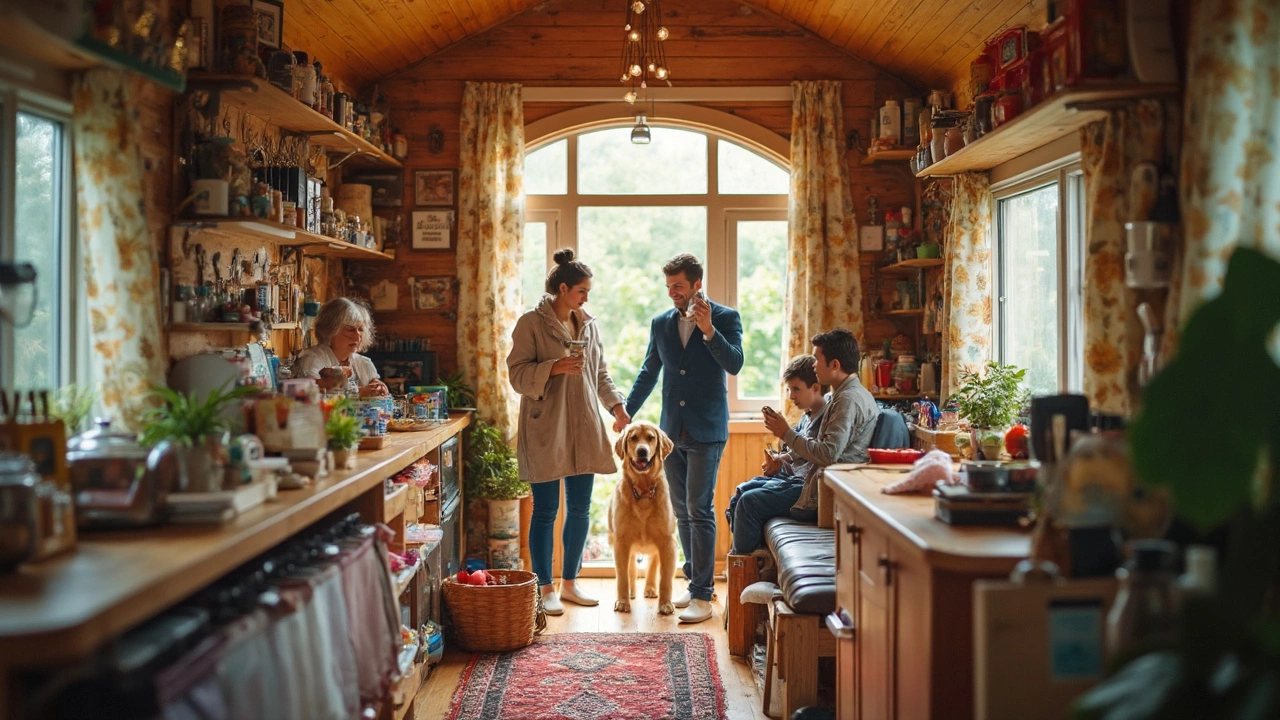Tiny Home Challenges – What Trips You Up and How to Fix Them
Living in a tiny home sounds cool, but the reality hits you fast. Suddenly you’re juggling less space, tighter budgets, and a maze of local rules. If you’re feeling stuck, you’re not alone. Below we break down the three biggest pain points and give you straight‑forward tricks that actually work.
Space Management – Making Every Square Foot Count
The first headache is obvious: you’ve got far less room than a typical house. That means clutter builds up quick and storage feels impossible. Start by treating furniture like a toolbox. Choose pieces that fold, stack, or double as storage – a sofa that turns into a bed with hidden drawers, or a kitchen island that slides under the counter when you’re not cooking.
Next, think vertical. Shelves that reach the ceiling pull unused space into play, and hanging racks keep items off the floor. A simple pegboard above the workbench can hold tools, mugs, or even plants without stealing floor area.
Finally, declutter regularly. Set a rule: if you haven’t used something in the last month, it probably belongs in a storage unit or a friend's garage. Tiny living thrives on intentionality – keep only what serves a purpose or sparks joy.
Cost Pressures – Building and Living on a Budget
Building a tiny home often promises cheap living, but hidden costs creep in. Permit fees, utility hookups, and the price of high‑quality, space‑saving fixtures add up quickly. Before you break ground, list every possible expense – even the small ones like weather‑proofing seals.
One money‑saving hack is to repurpose materials. Reclaimed wood, salvaged windows, and second‑hand appliances can look great and slash costs. Just make sure they meet local building codes – cheap now, pricey later if they fail inspection.
When it comes to utilities, go off‑grid where you can. Solar panels, composting toilets, and rainwater catch‑systems lower monthly bills and reduce reliance on expensive hookups. Many tiny home owners start with a simple 200‑watt solar kit and expand as needed.
Don’t forget financing. Some lenders see tiny homes as accessories, not primary residences, leading to higher interest rates. Shop around for specialty lenders that understand the tiny market, or consider a personal loan if you have strong credit.
By planning every line item and being creative with materials, you can keep the project under control and avoid nasty financial surprises.
Legal Maze – Navigating Zoning and Building Codes
Ever tried to park a tiny home on a piece of land only to discover it’s not allowed? Zoning rules vary wildly between counties, and many areas still treat tiny homes as RVs, not houses. The first step is to talk to the local planning office before you buy land.
Ask specifically about minimum square footage, ceiling height, and whether a foundation is required. Some places allow “tiny houses on wheels” (THOWs) in designated RV parks, while others only accept permanently anchored structures.
If you hit a roadblock, consider applying for a variance – a special permission that lets you bend the rules. Prepare a solid case: show how your tiny home meets safety standards, won’t impact neighbors, and adds value to the community.
Another tip is to look for tiny‑friendly zones. A growing number of municipalities have created “tiny home villages” with pre‑approved sites, utilities, and relaxed codes. These areas can save you weeks of paperwork.
Staying ahead of the legal hurdles means less stress later. Keep copies of every permit, and don’t skip inspections – they’re there to keep you safe, not to stop you.
Living tiny is rewarding when you master space, money, and rules. Use these quick fixes, stay curious, and you’ll find the lifestyle that fits your pocket and your personality. Happy tiny living!
Biggest Drawbacks of Tiny House Living: What You Need to Know
Thinking about moving into a tiny house? This article lays out the real challenges you might run into, from space crunches to storage nightmares. Discover how tiny houses can turn daily routines upside down, especially if you have kids or pets. Learn from real-life examples, and get practical tips on handling the less glamorous side of eco-friendly living. If you're dreaming about downsizing, here's what you should know before taking the leap.
